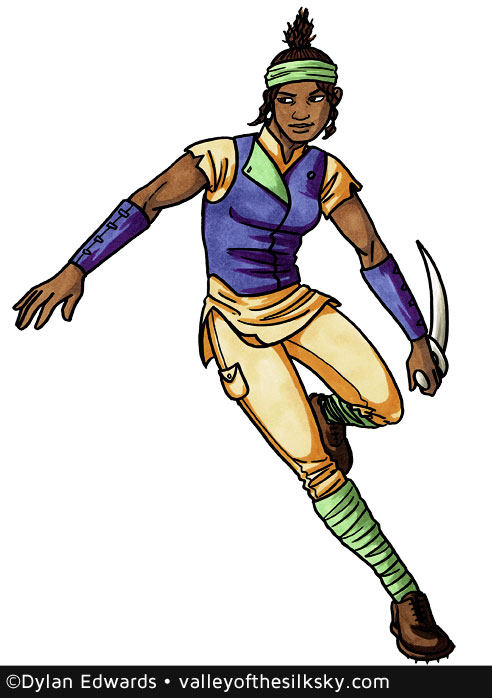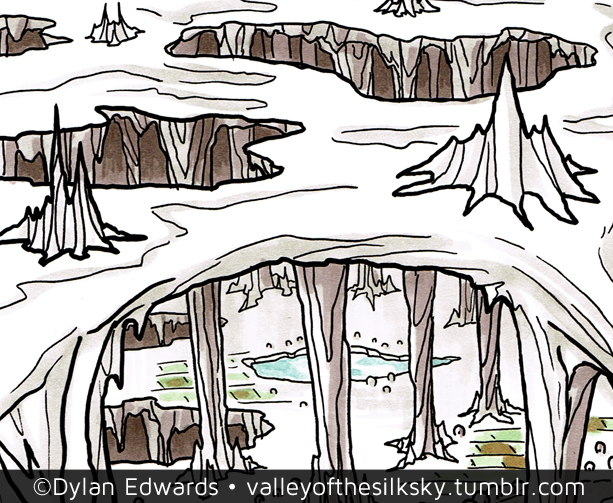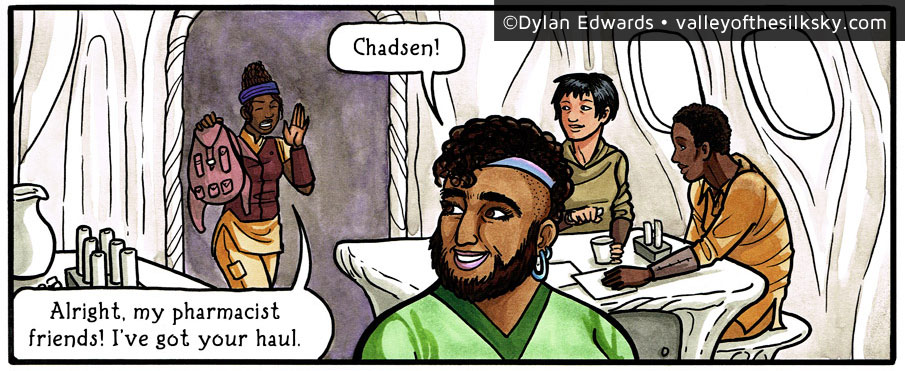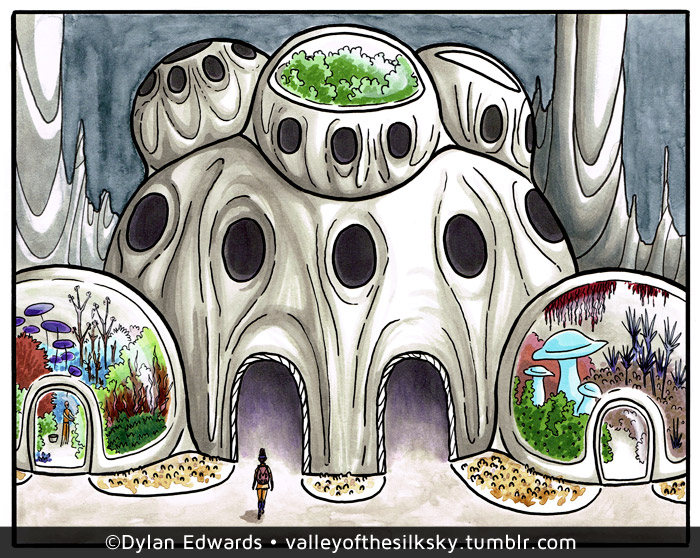 The unusual geography of the Valley makes it a host to countless microclimates, which in turn means there’s a whole bunch of rare flora, many of which may only be found in one small area.
The unusual geography of the Valley makes it a host to countless microclimates, which in turn means there’s a whole bunch of rare flora, many of which may only be found in one small area.
Many of these plants have valuable medicinal or industrial application, and they can often be difficult or impossible to cultivate. So how do you get ahold of them if, say, you’re a pharmacist and you need that berry extract for a wound treatment salve? Why, you hire yourself a runner.
The harder a plant is to get, the more it costs to retrieve. So, while you can certainly do a little bit of business as a runner in the upper provinces, the real money is to be had collecting items from the lower three provinces. All you have to do is avoid being killed by whatever is between you and the thing you’re trying to collect. Simple!
Pretty much anyone can become a runner, but you’ll have an easier time getting hired if you’re licensed by the Pocali government. Licensed runners have had training in correctly identifying desirable plants (you do not, for example, want to hire a runner who can’t tell the beneficial berry from the nearly identical poisonous berry).
Of course, the services of licensed runners are more expensive. Use an unlicensed runner at your (or possibly your client’s) own risk.
There is a standard set of runner’s gear that includes the shirt, trousers, bracers, gaiters, shoes, belt, and vest. The outfit is designed to be modular, and there are multiple variations tailored to the preferences of the particular runner. Are you looking to enhance speed and flexibility (go with the wraps), or are you worried about snakes chewing on your ankles (you’ll want those gaiters)?
You’ll be able to pick up a set of gear if you attend a runner’s academy in the course of pursuing your license. If you didn’t go to academy, you can make your own gear, or you can scavenge it from wherever you can find it. If you got it off the last runner who died in pursuit of that extremely-difficult-to-retrieve medicinal, maybe keep that fact to yourself.


 The unusual geography of the Valley makes it a host to countless microclimates, which in turn means there’s a whole bunch of rare flora, many of which may only be found in one small area.
The unusual geography of the Valley makes it a host to countless microclimates, which in turn means there’s a whole bunch of rare flora, many of which may only be found in one small area.
 Botanists are always looking for species that can be domesticated and grown on demand to reduce production costs. Places like the Pharmaceutical Research Center in Uttara City typically have greenhouses that cultivate whatever useful species can be grown in the area. The modular nature of the building helps prevent unwanted cross-pollination of the plants being cultivated, or escape by potentially invasive species.
Botanists are always looking for species that can be domesticated and grown on demand to reduce production costs. Places like the Pharmaceutical Research Center in Uttara City typically have greenhouses that cultivate whatever useful species can be grown in the area. The modular nature of the building helps prevent unwanted cross-pollination of the plants being cultivated, or escape by potentially invasive species.